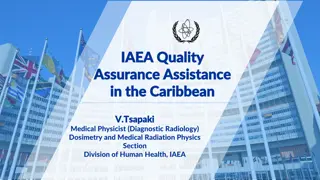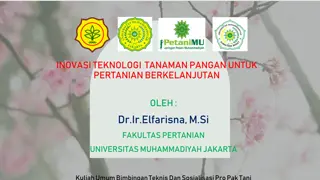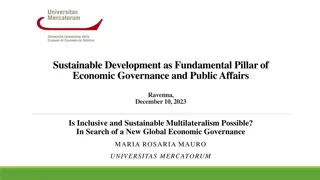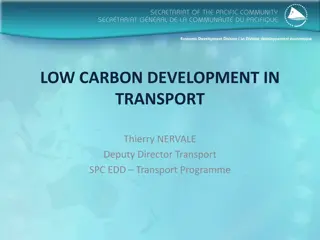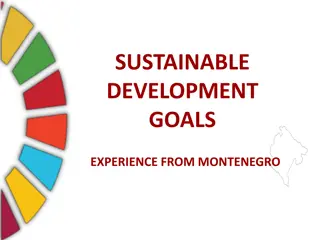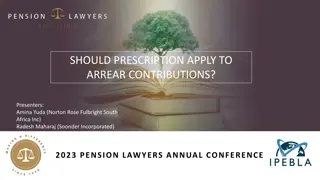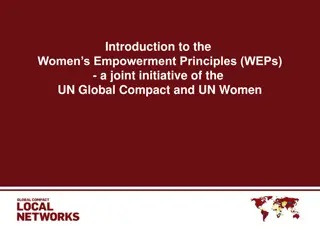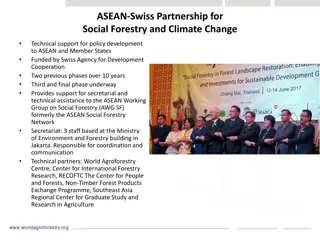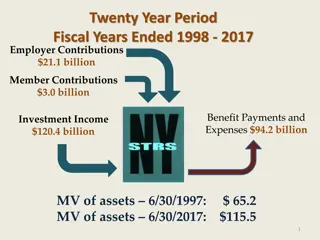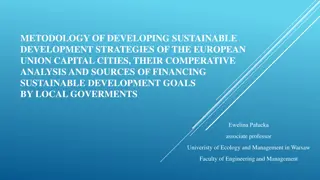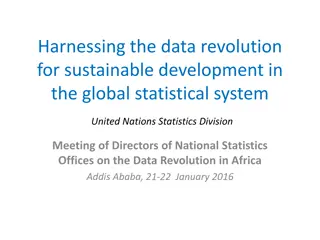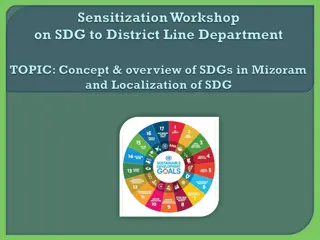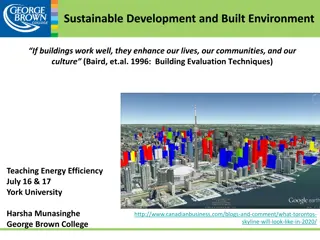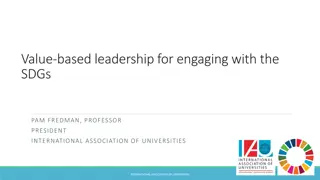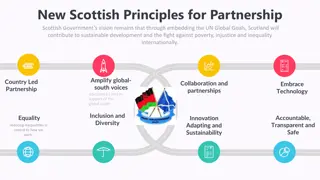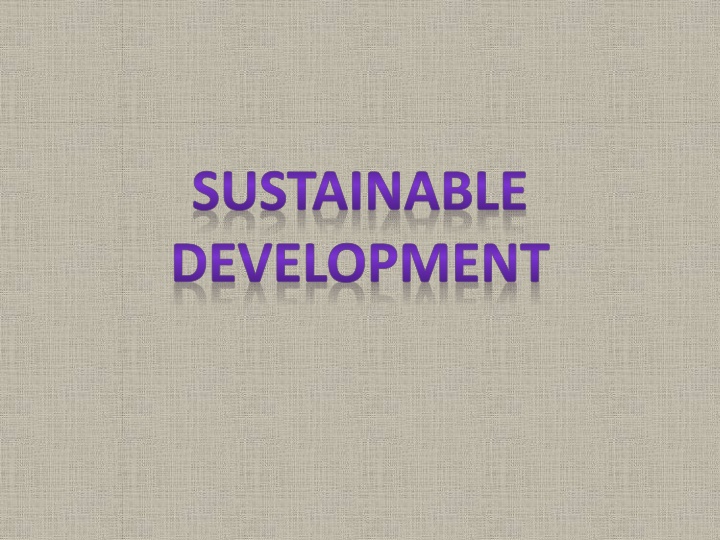
Sustainable Development: Key Principles and Contributions
Sustainable development aims to meet present needs without compromising future generations, highlighting the importance of balancing economic growth with environmental preservation. Nikola Tesla's contributions and the Brundtland Report of 1987 played pivotal roles in shaping the concept of sustainable development. Learn about the Earth Summits that furthered the global agenda for sustainable development.
Download Presentation

Please find below an Image/Link to download the presentation.
The content on the website is provided AS IS for your information and personal use only. It may not be sold, licensed, or shared on other websites without obtaining consent from the author. If you encounter any issues during the download, it is possible that the publisher has removed the file from their server.
You are allowed to download the files provided on this website for personal or commercial use, subject to the condition that they are used lawfully. All files are the property of their respective owners.
The content on the website is provided AS IS for your information and personal use only. It may not be sold, licensed, or shared on other websites without obtaining consent from the author.
E N D
Presentation Transcript
SUSTAINABLE DEVELOPMENT
Meaning Sustainable development is economic development that is conducted without depletion of natural resources. The development that meets the needs of the present without compromising the ability of future generations to meet their own needs. Sustainable development is a pattern of resource use that aims to meet human needs while preserving the environment so that these needs can be met not only in the present, but also for future generations.
Contribution of Nikola Tesla Nikola Tesla is known as the father of sustainable development. Electrical and mechanical engineer. Articles :- 1. Problems of increasing human energy (June 1900) 2. The power of the future (1920)
The Brundtland Report 1987 Earlier known as World Commission on Environment and Development (WCED) Mission : to unite countries to pursue sustainable development together. The chairperson of the commission, Gro Harlem Brundtland was appointed by United Nations. Former Prime Minister of Norway and was chosen due to her strong background in the sciences and public health.
In April 1987, Brundtland Report was presented to the United Nations. It was report, entitled Our Common Future . Known to all as the Brundtland Report. Written by 23 experts from 22 different countries. It officially defined sustainable development for the first time.
Sustainable Development : Definition Brundtland Report 1987 :- Sustainable development is development that meets the needs of the present without compromising the ability of future generations to meet their own needs. This means meeting the diverse needs of all people in existing and future.
Earth Summits for Sustainable Development 1. First Earth Summit at Rio 1992 The United Nations Conference on Environment and Development (UNCED) Also known as Rio de Janeiro Earth Summit, the Rio Summit, the Rio Conference, the Earth Summit or the First Earth Summit. It was a major United Nations Conference held in Rio de Janeiro from 3rd to 14th June 1992. The purpose of the conference was to rethink economic growth, advance social equity and ensure environmental protection.
2. Second Earth Summit at Johannesburg, 2002 The World Summit on Sustainable Development (WSSD) or Earth Summit 2002 took place in Johannesburg, South Africa, from 26th August to 4th September, 2002. It was convened to discuss Sustainable development by the United Nations. WSSD gathered a number of leaders from business and non-governmental organizations, 10 years after the first earth summit in Rio de Janeiro. It was therefore, also informally nicknamed Rio+10 .
3. Third Earth Summit 2012 at Rio In 2012, the United Nations Conference on Sustainable Development was also held in Rio de Janeiro. It is commonly called as Rio + 20 or Rio Earth Summit 2012. It was held from 13th to 22nd June, 2012.
Sustainable Development Goals (SDGs) The SDGs are a collection of seventeen (17) global goals designed to be a blueprint to achieve a better and more sustainable future for all . All the SDGs are integrated. SDGs will balance social, economic and environmental sustainability. The SDGs intended to be achieved by the year 2030, are part of UN Resolution 70/1, the 2030 Agenda. The SDGs were adopted by all United Nations Member States in 2015 at United Nations Sustainable Development Summit meeting of General Assembly of UN at New York from 25th to 27th september.
Theme : Transforming Our World : The 2030 Agenda for Sustainable Development Attended by 193 member countries. Purpose : A universal call to action to end poverty, protect the planet and ensure that all people enjoy peace and prosperity by 2030.
The 17 Sustainable Development Goals (SDGs) to transform our world :- Goal 1: No Poverty Goal 2: Zero Hunger Goal 3: Good Health and Well Being Goal 4: Quality Education Goal 5: Gender Equality Goal 6: Clean Water and Sanitation Goal 7: Affordable and Clean Energy Goal 8: Decent Work and Economic Growth Goal 9: Industry, Innovation and Infrastructure Goal 10: Reduced Inequality
The 17 Sustainable Development Goals (SDGs) to transform our world :- Goal 11: Sustainable Cities and Communities Goal 12: Responsible Consumption and Production Goal 13: Climate Action Goal 14: Life Below Water Goal 15: Life on Land Goal 16: Peace, Justice and Strong Institutions Goal 17: Partnerships to Achieve the Goal

